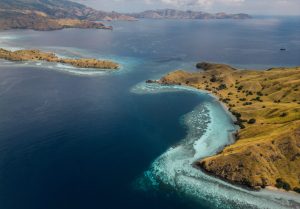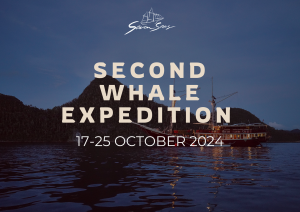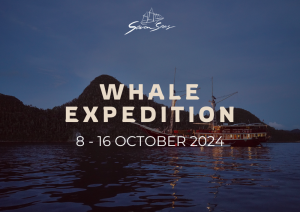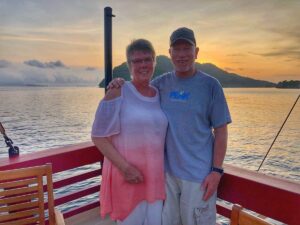Fishing boats in Indonesia are an important part of the country’s marine life and economy.Some of you may like to learn a bit more about what happens around Indonesia’s vast marine areas. Lida will share some short info stories every now and then, we hope you like them. This one is about Indonesian fishing boats.
Fishing boats in Indonesia: Types and Roles
Indonesia’s oceans and coastal ecosystems are world renowned for their diversity and productivity. Since the 1980s, scientists have described how Indonesia’s myriad of large and small land masses, connected by sea straits and encircled with large areas of coral reefs, mangrove forests and seagrass beds connect the large water masses between the Pacific and Indian oceans, affect upwellings of primary production and movement and exchange marine organisms, resulting in very high levels of speciation – the awesome diversity we see underwater on our Seven Seas dives and snorkel trips – and fish production.
Indonesia is the largest archipelago in the world and the second-largest fish producer after China. Indonesia’s fisheries are vital to the country’s economy, accounting for close to 5% of Gross Domestic Product. The total value of wild capture in 2015 was around USD 9 billion. In 2014, the United States ranked as the world’s largest importer of Indonesian fishery products, accounting for just over 40% of total Indonesian fishery exports. Fishing boats in Indonesia play a crucial role in supporting this extensive fish production and export industry, connecting remote coastal communities to global markets.
The fisheries sector also plays an important role in contributing to national food security and employment in Indonesia. A recent study ranked Indonesia as the eighth most fish-dependent nation in the world, measured by dependence on fish-derived animal protein. Indonesia had an estimated per capita fish protein consumption rate of 46.49 kg/year in 2017 and a target of increasing that to about 54 kg in 2019. That means more than 1 kg of fish per person a week, and with more than 266 million people in Indonesia, that is a lot of fish!
The wild capture fisheries sector employs approximately 2.7 million workers and over 1 million people are involved in the processing and marketing of fisheries products. Overall, the Indonesian Bureau of Statistics estimates that nearly nine million people are involved in fisheries-related jobs. About 95% of Indonesia’s fishers are small-scale fishers. Small-scale fisheries are incredibly important in Indonesia for both livelihoods and provision of protein to diets and contribute substantially to Indonesia’s seafood export market. Fishing boats in Indonesia, particularly those used by small-scale fishers, are essential assets supporting the livelihoods of millions and sustaining the country’s seafood exports.
Fish and other seafood are caught throughout Indonesia with fishing boats of all sizes and types. As the Seven Seas moves between islands, you may see some fishing boats, and all of these would be smaller than 100 Gross Tonnes (GT) in size, in fact, it’s likely that you won’t see anything bigger than 10-16 GT. To get a feel for size, the Seven Seas is around 200 GT. Size of fishing vessels is expressed in GT which indicates the internal volume of the vessel.
The first motorization of Indonesian fisheries started in the 1970s but Indonesia’s statistics show that only 32% of all fishing vessels today – about 544,000 fishing boats in 2016 – are motorized, and that the majority of motorized fishing boats are smaller than 5 GT. This has been pretty much the case for the past 10 years. When the Seven Seas harbours near Labuan Bajo after a Komodo trip, you can hear the obvious – and loud – sound of the small fishing boats going out to fish even before dawn!
Fishing vessels can only fish in certain areas, depending on their size and port of registration. No fishing boats are allowed in fully protected zones of marine protected areas. Indonesian fishing vessels operate within Indonesia’s Exclusive Economic Zone which lies between 0 – 200 nautical miles (nm) of Indonesia’s coastlines.
The largest Indonesian fishing boats can fish within the EEZ area but must stay outside of the area enclosed within 20 nm from the coast line. The largest vessels operate mostly at the “high seas”, and Indonesia must register these fishing vessels and their catches with Regional Fisheries Management Organizations who overlook fishing in these international waters. Fishing boats in Indonesia therefore navigate complex regulations to balance national interests with international fishing laws.
The area within 20 nm is reserved for smaller fishing vessels but these smaller boats can also fish up to the 200 nm outer boundary of the Indonesian EEZ. Sometimes, when cruising across open sea, especially during the East of Flores itinerary when spotting for whales, you will see floating bamboo rafts or Fish Attracting Devices (FADs), where even some of the smaller fishing boats gather to fish for tunas. Fishing boats in Indonesia, particularly smaller vessels, utilize these areas and methods to maximize their catch within regulated boundaries.
Boats larger than 7 GT need to register with the government and carry a valid fishing licence – valid for 1 year – which specifies what fishing gear they are allowed to use and which areas they are allowed to fish. They need to land their fish at an official port, which is also identified on their registration papers. Smaller boats can pretty much fish where and how they want, as long as they don’t use illegal ways to catch fish.
or my work advising on Indonesia’s fisheries management, I find it interesting to compare fishing power of the different types of fishing fleet and due to their large numbers, the small-scale fisheries have more fishing power than the larger fleet. With many of these not being registered, management of Indonesian fisheries has therefore become all about management of small-scale fisheries.
Please take a look around next time you join the Seven Seas for an adventure,
you may spot some interesting fishing boats around the boat!
Learn more about types of fishing boats in Indonesia here
Lida Pet-Soede
NOTE :
To reserve your spots or see available trips, please check out our schedule page :
Schedule & Availability
Please also don’t hesitate to reach out to us at [email protected] should you require any further information or need recommendations for accommodation or flights etc. Our reservation team would be more than happy to assist. Cheers!
Follow us on instagram or Contact Us for more information about fishing boats in Indonesia





